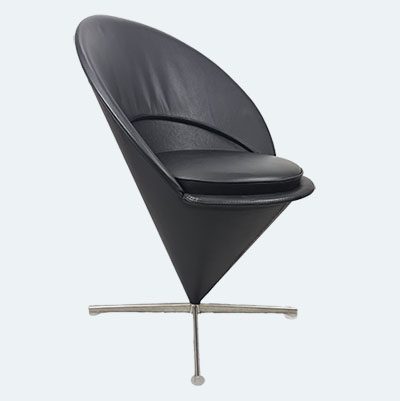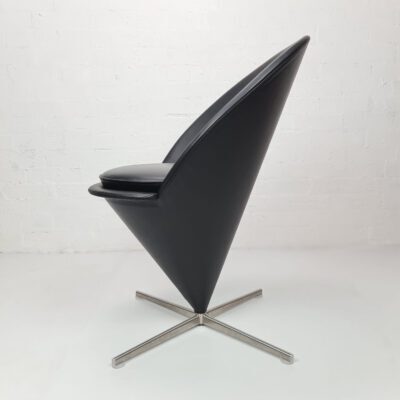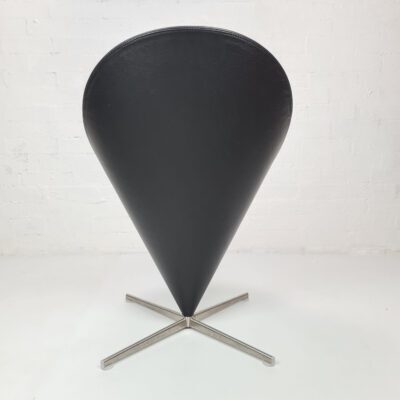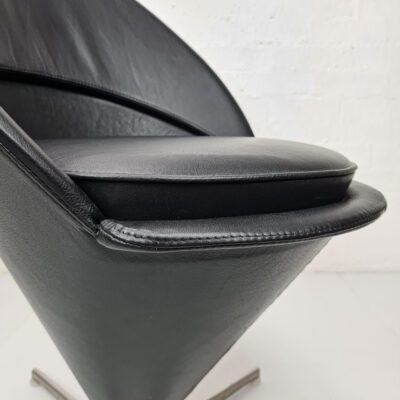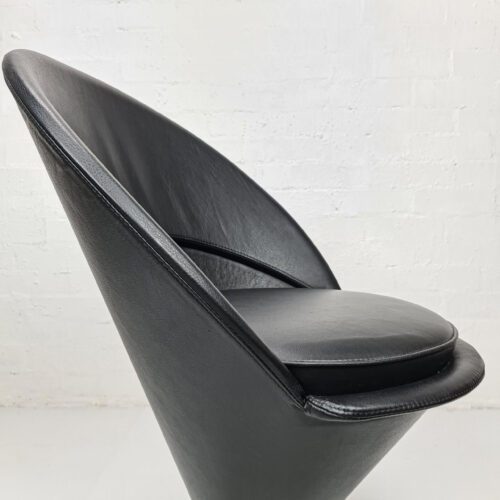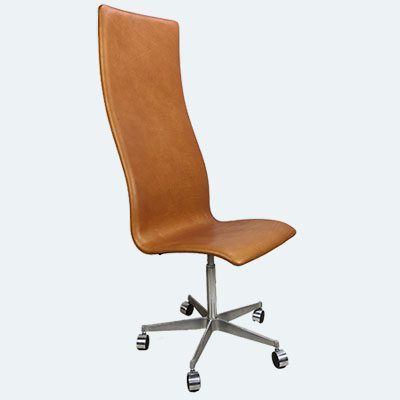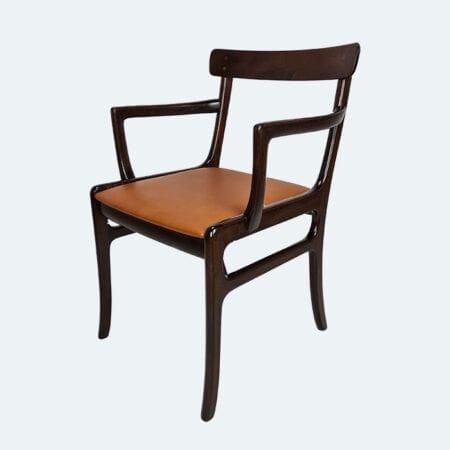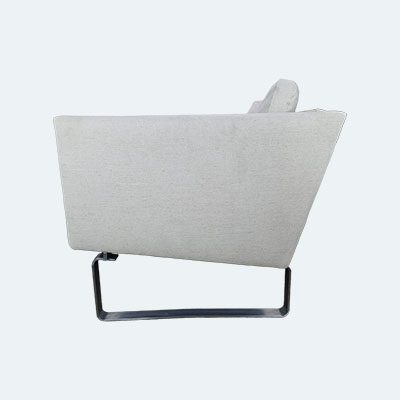Design story
Verner Panton Cone Chair was originally designed for a restaurant in Denmark and produced as a small series. It takes its shape from the classic geometric figure for which it is named. The padded shell forms the back and armrests and, together with the soft seat cushion, creates an exceptionally comfortable armchair, which is mounted on an elegant stainless steel swivel base. Produced by Vitra.
The 50s and 60s were times of endless experimentation in architecture and design with emergence of stylistic diversity, bold new colour schemes and extraordinary forms. Danish born Verner Panton was inspired by this new world power that emerged in post-war Europe. He became famous for his experimental pop art and at times psychedelic designs.
Panton was born north of Copenhagen, Denmark, and studied at Odense Technical College before enrolling to at the Royal Danish Academy of Fine Arts. Upon finishing his Architecture degree he worked at Arne Jacbosen‘s Architect firm for a couple of years (1950 – 1952). Panton then started his own design and architectural studio soon to become known for its innovative architectural ideas, such as a collapsible house (1955). His passion for colours and geometric patterns manifested itself into a range of sculpture-like furniture.
Fascinated with the progressive polymer that could be moulded into any shape Panton wanted to create a chair in one piece. 15-20 manufacturers tried but rejected his project for various reasons until Swiss Vitra in 1963 decided to take on the challenge. Four years of ten prototypes later the Panton chair (also called the “S” chair) was born.
Verner Panton died in 1998 in Copenhagen not far from where he was born. After his death, Vitra re-edition many of his designs. The retrospective of his work can also be seen in the Vitra Design Museum. It bear witness to the special relationship between Vitra and Verner Panton.

